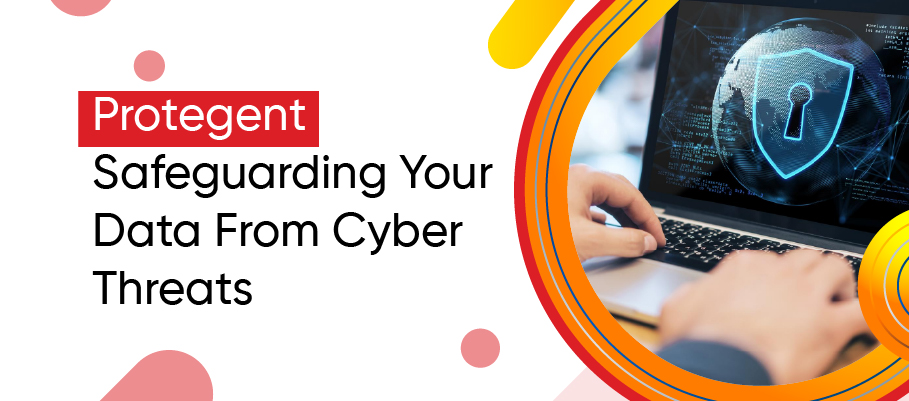
Protegent: Safeguarding Your Data from Cyber Threats
In the realm of cybersecurity, the perilous landscape of internet attacks poses a significant threat. These threats encompass a wide spectrum, ranging from infiltrations of critical infrastructure to data breaches, spear phishing, and brute force assaults. Cyber adversaries show no discrimination, targeting both businesses and individuals as potential victims.
While the term “cyber threat” is commonly thrown around in media discourse, understanding its essence is pivotal. A cybersecurity threat is any malicious act that aims to harm, steal, or disrupt data and digital life.
To delve deeper into the concept of cyber threats, it’s essential to explore the historical evolution of cybersecurity. The risks and repercussions of these threats continue to escalate in our interconnected world. Let’s unravel the nature of cyber risks and explore ways to mitigate them.
What Constitutes a Cyber Threat?
A cyber threat is an injurious activity executed with the intent to destroy, steal, or disrupt data and digital life. Examples of these risks include computer malware, data breaches, and Denial of Service (DoS) assaults. As our reliance on technology grows, cyber dangers evolve, posing a substantial risk to individuals and enterprises alike. Understanding these threats is the initial step in fortifying defenses.
Consequences of Cyber Attacks
In recent times, cyber-attacks have become more pervasive, sparing neither companies nor individuals. The dangers associated with data breaches and cyber assaults are escalating as an increasing volume of sensitive information is stored and exchanged online. The repercussions of a cyber attack can be far-reaching, including electrical blackouts, military equipment failures, breaches of national security secrets, theft of valuable data, disruption of computer and phone networks, system paralyzation, encryption of critical information, and a profound impact on daily life.
The severity of these threats is escalating, prompting Gartner to highlight the omnipresence of cybersecurity risks and the choices business leaders make daily regarding technology-related risks.
Types of Cyber Attacks
Cyber attacks manifest in various forms, each employing distinct techniques and objectives. Here are seven prominent cyber threats that pose a risk to businesses:
Malware: Malicious software that performs harmful tasks, such as corrupting data or taking control of a system.
“Man in the Middle” (MitM) Attack: Involves intercepting electronic messages between sender and recipient, potentially altering them during transit.
Denial of Service (DoS) or Distributed Denial of Service (DDoS) Attack: Overloads a target system, causing it to crash by leveraging numerous compromised devices.
Attacks on IoT Devices: IoT devices, like industrial sensors, face threats such as unauthorized access and being incorporated into DDoS attacks.
Data Breaches: Involves the theft of data by a malicious actor, with motives ranging from identity theft to espionage.
SQL Injection: Cyber assault introducing harmful code into a server through Structured Query Language (SQL) to extract data.
Password Attacks: Unauthorized access to data by exploiting weak passwords, often involving social engineering or direct guessing attempts.
Causes of Cyber Attacks
Understanding the origins of cyber attacks is crucial for designing effective prevention and mitigation strategies. Causes include human errors, outdated software, inadequate authentication, state-sponsored cyber assaults, attacks between nations, and vulnerabilities in third-party technology providers.
Common Sources of Cybersecurity Threats
Cyber threats emanate from diverse sources, including individuals creating attack vectors, criminal organizations, nation-states, terrorists, industrial spies, organized crime groups, disgruntled insiders, hackers, and business competitors. Nation-states are particularly potent sources of serious attacks, engaging in espionage or disruptive activities.
How to prevent cyber threats with Protegent Total Security
Preventing cyber threats is a critical aspect of ensuring the security of your digital assets and personal information. Protegent Total Security provides a robust solution to safeguard against various cyber threats. Here’s how you can use security to prevent cyber threats:
Antivirus Protection: Protegent security includes advanced Antivirus protection that detects and eliminates a wide range of malware, including viruses, Trojans, worms, and spyware. Real-time scanning ensures that your system is continuously protected against emerging threats.
Internet Security: The software offers comprehensive internet security features to protect you while browsing. It blocks malicious websites and prevents phishing attacks, ensuring safe online experiences.
Firewall Protection: Protegent Total Security includes a robust firewall that acts as a barrier between your device and potential cyber threats. It monitors and controls incoming and outgoing network traffic, enhancing your system’s security.
Data Backup and Recovery: To safeguard your important files and data, the software provides a reliable backup and recovery feature. Regularly back up your critical data to prevent loss in case of a cyber-attack.
Email Security: Protect yourself from email-borne threats with Protegent’s email security feature. It scans email attachments and content for potential threats, keeping your inbox safe from malicious elements.
USB Threat Prevention: Cyber threats often enter through infected USB drives. The software includes USB threat prevention, which scans external drives for malware before allowing access to your system.
Parental Control: If you have children using the internet, Protegent’s parental control feature helps you manage their online activities. It allows you to restrict access to inappropriate content and ensures a safe online environment for your family.
Identity Theft Prevention: Protegent includes tools to prevent identity theft by safeguarding your personal information. It secures your online transactions and protects sensitive data from being accessed by unauthorized entities.
Regular Updates: Keeping your security software up to date is crucial. Protegent provides regular updates to its virus definitions and software features, ensuring that your protection is equipped to handle the latest cyber threats.
Multi-Layered Security: The software employs a multi-layered security approach, combining various protective measures to create a comprehensive shield against cyber threats. This layered defense strategy enhances the overall security posture of your system.
In conclusion, the multifaceted nature of cyber threats underscores the need for comprehensive cybersecurity measures. As technology continues to advance, understanding, preventing, and mitigating these threats becomes imperative for safeguarding individuals, businesses, and critical infrastructures.
By utilizing Protegent Total Security, you can significantly reduce the risk of falling victim to cyber threats. Regularly updating the software, practicing safe online habits, and taking advantage of its diverse features will contribute to a more secure digital environment for your devices and personal data.
Want to safeguard your online world?
Buy Protegent today!




